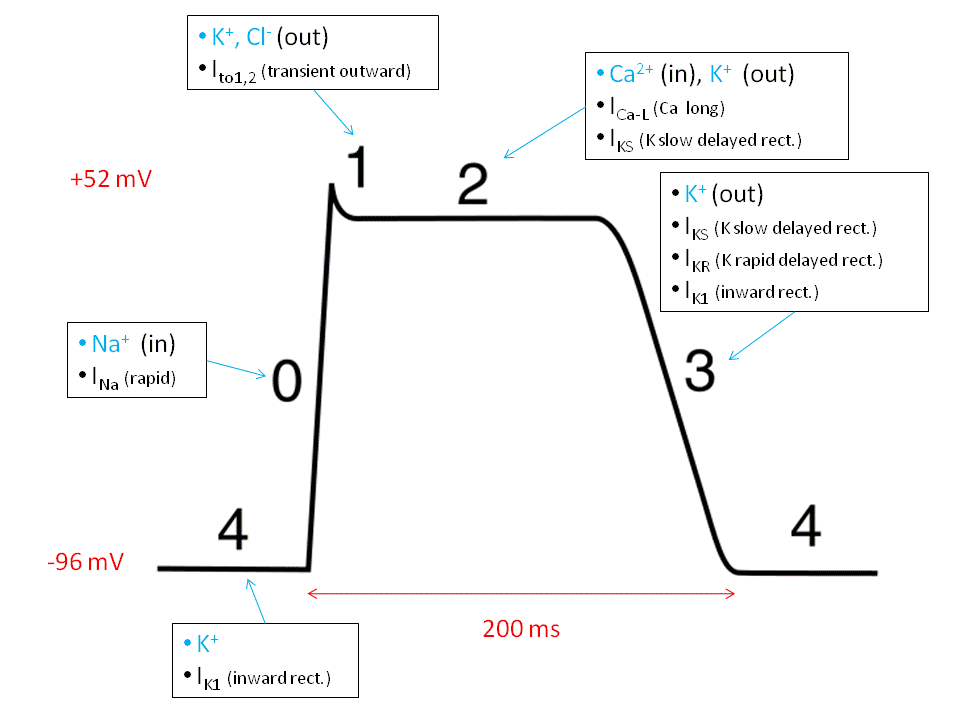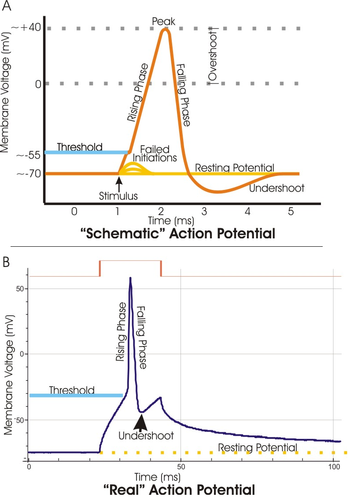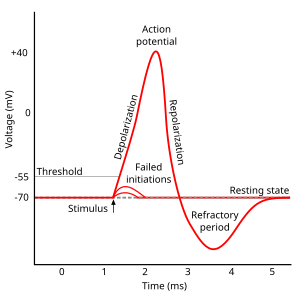Demystifying Action Potentials: Exploring Their Phases
Phases Of An Action Potential – Resting Potential, Threshold, Rising, Falling, \U0026 Recovery Phases
Keywords searched by users: How many phases does an action potential have Action potential, phases of action potential, what is action potential in physiology, Action potential là gì, Depolarization, Hyperpolarization, what is action potential in a neuron, action potential physiology pdf
What Are The 4 Phases Of The Action Potential?
The action potential is a fundamental electrical event that occurs in excitable cells, such as neurons and muscle cells. It consists of four distinct phases, each with its unique characteristics and functions. These phases are as follows:
-
Depolarization: During this phase, the cell’s membrane potential rapidly shifts from a negative to a positive state. This shift occurs when voltage-gated sodium channels open, allowing an influx of sodium ions into the cell. This influx of positively charged ions causes the membrane potential to become less negative, eventually reaching a positive value.
-
Repolarization: After the depolarization phase, the cell undergoes repolarization, where the membrane potential returns to its negative resting state. This occurs due to the closure of sodium channels and the opening of voltage-gated potassium channels. Potassium ions exit the cell, leading to a re-establishment of the negative resting potential.
-
Hyperpolarization: Following repolarization, some cells experience a brief period of hyperpolarization, where the membrane potential becomes more negative than the resting state. This hyperpolarization is caused by the slow closing of potassium channels, which temporarily overshoots the resting membrane potential.
-
Refractory Period: After an action potential, there is a refractory period during which the cell is less responsive to additional stimuli. This phase is crucial for preventing the action potential from traveling backward along the axon and for regulating the frequency at which neurons can transmit signals.
Understanding these four phases is essential for comprehending how action potentials enable the transmission of electrical signals in the nervous system. Please note that the information provided here is accurate as of September 2021, and further research may have contributed to our understanding of this topic since that time.
What Are The 5 Steps Of An Action Potential?
The process of an action potential unfolds through five distinct phases, each crucial to its overall function. These phases include the resting potential, threshold, rising phase, falling phase, and recovery phase. To initiate this journey, we first encounter the resting potential, a fundamental starting point that represents the membrane potential of a neuron when it is not actively transmitting signals. This phase sets the stage for the subsequent steps in the action potential process.
Top 16 How many phases does an action potential have







Categories: Summary 55 How Many Phases Does An Action Potential Have
See more here: future-user.com

An action potential has three phases: depolarization, overshoot, repolarization. There are two more states of the membrane potential related to the action potential. The first one is hypopolarization which precedes the depolarization, while the second one is hyperpolarization, which follows the repolarization.An action potential can be further broken down into its separate stages: depolarization, repolarization, hyperpolarization, and the refractory period.The action potential can be divided into five phases: the resting potential, threshold, the rising phase, the falling phase, and the recovery phase. We begin with the resting potential, which is the membrane potential of a neuron at rest.
Learn more about the topic How many phases does an action potential have.
- Action potential – Definition, Steps, Phases | Kenhub
- Question Video: Stating the Sequence of Stages in an Action Potential
- The Action Potential – Script
- Physiology, Action Potential – StatPearls – NCBI Bookshelf
- Cardiac Action Potential – an overview | ScienceDirect Topics
- Cardiac action potential – Wikipedia
See more: https://future-user.com/your-money blog
Để lại một bình luận